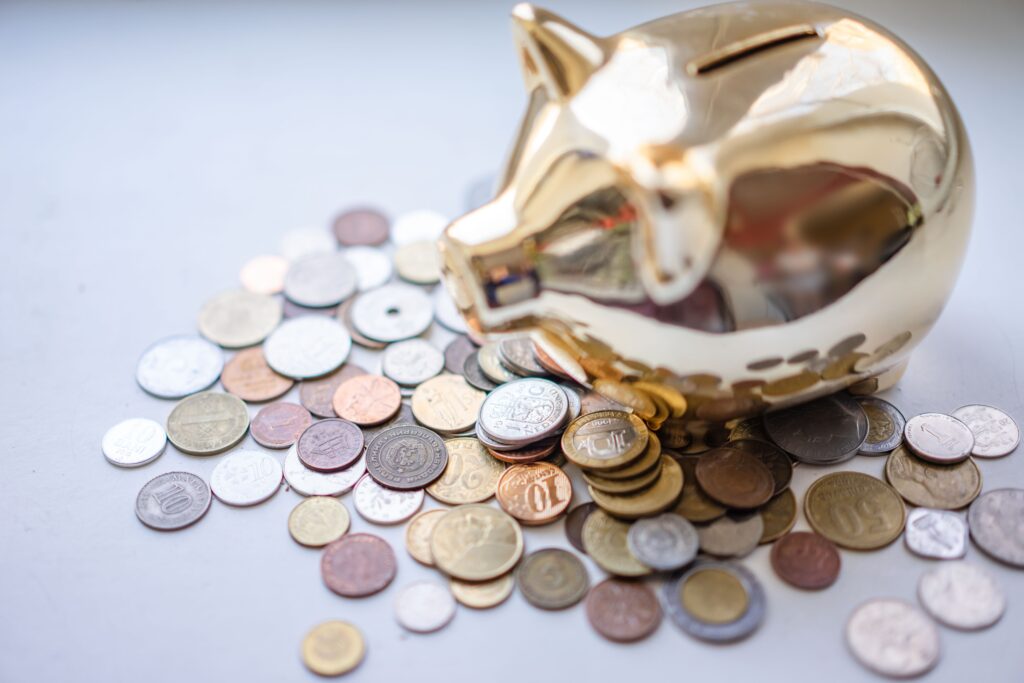Hold on a minute, Small Business Owner! Is Debt Drowning Your Growth Potential?
Debt. The word itself can send shivers down the spine of any Business owner.
But wait! What if we told you debt could be a powerful mentor instead?
A wise (albeit strict) teacher offering valuable lessons and fueling strategic growth?
Yes, you read that right. Debt can be a double-edged sword, just like any risk in business.
This ultimate guide will show you how to navigate the world of managing debt and financial risk for small businesses. We’ll help you transform that scary double-edged sword into a tool for success. Remember, as the saying goes,
NO Risk Reward
NO
Reward
People Also Read:
Different Types of Financial Risk in Small Business
Owning a small business is an exciting journey, but like any adventure, it comes with its own set of challenges. Financial risks are the hidden obstacles on your path to success. These can take many forms, but some of the most common types include
- Market risk
- Credit risk
- Liquidity risk
- Operational risk
Here’s a breakdown of the four main types of financial risks and how to keep them from capsizing your business:
1. Market Risk:
Imagine a sudden shift in consumer preferences or a competitor launching a game-changing product. These are examples of market risk, the uncertainty surrounding external factors that can impact your sales and profitability.
How to Mitigate:
Conduct thorough market research, stay informed about industry trends, and diversify your offerings to avoid relying on a single product or customer segment.
2. Credit Risk:
This refers to the possibility of customers or vendors failing to meet their financial obligations to you. Imagine unpaid invoices or bad debts eating into your cash flow.
How to Mitigate:
Implement a robust credit check process for customers, offer flexible payment terms cautiously, and consider credit insurance for high-risk transactions.
3. Liquidity Risk:
Liquidity refers to your ability to access cash to meet your short-term financial needs. Even a profitable business can struggle if it can’t pay its bills on time.
How to Mitigate:
Maintain a healthy cash reserve, manage your inventory efficiently, and secure a line of credit to bridge any temporary cash flow gaps.
4. Operational Risk:
These are the internal glitches that can disrupt your business operations and ultimately, your bottom line. Examples include employee fraud, equipment failures, or supply chain disruptions.
How to Mitigate:
Invest in robust internal controls, maintain proper insurance coverage, and have a disaster recovery plan in place to address unexpected disruptions.
By understanding these financial risks and implementing strategies to mitigate them, you can navigate the ever-changing business landscape more confidently and keep your small business on a steady course toward success.
Real-World Examples of Debt Management by Successful Businesses
Apple’s story in the 1990s is a textbook example of a tech giant teetering on the edge and then making a remarkable comeback.
Yes, you read that right. Tech giant Apple (AAPL) faced financial risk in the mid-90s.
The company faced a multitude of issues, including uncompetitive products, a bloated product line, and internal struggles that led to the ousting of co-founder Steve Jobs. This resulted in plummeting sales and mounting debt.
What did Apple do to turn things around? Here are some key takeaways for small businesses facing similar challenges:
Focused Leadership: When Steve Jobs returned to Apple in 1997, he brought a clear vision and decisive leadership. He streamlined the product line, prioritizing user experience and design. This focus on a core offering is crucial for small businesses to avoid spreading themselves too thin.
Innovation: Jobs championed the development of groundbreaking products like the iMac and the iPod. Small businesses can innovate by finding new solutions to customer problems or by implementing fresh marketing strategies.
Strategic Partnerships: In 1997, a $150 million investment from Microsoft, along with a commitment to develop Office for Mac, provided Apple with a much-needed financial boost. Strategic partnerships can be a lifeline for small businesses, offering access to resources or new markets.
Apple’s journey from near-bankruptcy to becoming a global powerhouse is an inspiring example of how effective debt management and strategic decision-making can lead to a successful turnaround.
Small businesses can overcome financial challenges and achieve long-term success by focusing on core products, embracing innovation, and seeking strategic partnerships.

Proven Strategies to Manage Debt and Financial Risk for Small Business
Debt can be a double-edged sword for small businesses. As Robert Kiyosaki, author of Rich Dad Poor Dad, highlights, there’s a crucial distinction between “good debt” and “bad debt.” Good debt works for you, putting money in your pocket and fueling growth. Bad debt, on the other hand, is a drain on your resources, financing depreciating assets or everyday expenses.
Here’s how you can navigate debt strategically and leverage its power for your small business:
1. Craft a Clear Debt Repayment Plan:
Think of this as your roadmap to financial freedom. Here’s what a good plan should include:
List all your debts: Include outstanding balances, interest rates, and minimum payment requirements for each debt source (credit cards, loans, etc.)
Prioritize ruthlessly: Focus on high-interest debts first. These accrue interest faster, making them more expensive over time.
There are two common prioritization methods:
Avalanche method:
Pay down the debt with the highest total balance first, regardless of interest rate. This provides a sense of accomplishment as you see larger balances disappear.
Snowball method:
Pay down the debt with the smallest balance first, regardless of interest rate. This can provide quicker wins and boost your motivation.
Allocate realistic payments: Factor in your current cash flow and project future income to determine realistic repayment amounts. Stretching yourself too thin can lead to missed payments and damage your credit score.
2. Become a Loan Comparison Ninja:
Avoid settling for the first loan offer you get. Shop around and compare interest rates, terms, and origination fees from various lenders. Here are some resources
Online loan marketplaces: These platforms connect small businesses with multiple lenders, allowing you to compare loan options and interest rates easily. Some popular options include:
- Funding Circle: https://www.fundingcircle.com/us/
- OnDeck: https://www.ondeck.com/
- Lendio: https://www.lendio.com/
- Small Business Administration (SBA): The SBA offers loan programs with favorable terms for qualified small businesses. The SBA offers a wealth of resources on managing your business finances, including debt management. They may also have loan programs available to help you refinance existing debt or access capital for growth. You can find their website here: https://www.sba.gov/
- Local banks and credit unions: Local financial institutions may offer competitive rates and personalized service for small business loans and debt consolidation options. Explore your local options.
3. The Art of Negotiation:
Don’t be afraid to negotiate with your existing creditors. Explain your financial situation and commitment to repayment, and see if they can offer lower interest rates or more flexible repayment terms.
4. Explore Debt Consolidation:
The aim of this strategy involves combining several loans into a single loan with a potentially lower interest rate. This may speed up your repayment process while potentially saving you money on interest.
However, be cautious of extending your repayment timeline significantly, as it can take longer to become debt-free.
5. Leverage Debt Strategically (For Growth):
While minimizing debt is crucial, there are situations where debt can be a powerful tool for growth. Consider using debt for:
Financing essential equipment upgrades: New equipment can boost your productivity and efficiency, ultimately generating more revenue.
Investing in targeted marketing campaigns: Debt (Good debt) can be used to reach a wider audience and acquire new customers. However, ensure a clear return on investment (ROI) before taking on debt for marketing.
Remember: Responsible borrowing is key. Only take on debt you can comfortably manage with your projected cash flow. By implementing these strategies, you can transform debt from a burden to a stepping stone on your path to small business success
By implementing these strategies, you can transform debt from a burden to a tool for growth, just like Rich Dad teaches. Focus on managing bad debt and strategically leverage good debt to propel your small business toward long-term success.
conclusion
Don’t let debt hold your small business back! This guide empowered you to transform it from a burden into a strategic growth engine through debt management strategies and financial risk mitigation.
Now it’s your turn to take action! Implement these strategies and build a bulletproof financial plan to propel your small business toward long-term success.
For more insightful content on managing debt and financial risk for small businesses, follow Aarvy Palette! We deliver expert tips and actionable strategies to help you achieve your entrepreneurial dreams.
Like this page ? share it with your friends !
- All
- Beauty & Fashion
- Finance
- Fitness
- Health
- Personal Finance

10 Best Diwali Gift Ideas with Gadgets in 2023 – amazon’s great indian Festival

Manage Business Debt and Financial Risk: Life-changing Facts

7 Streams of Income: Everything you need to know to become a millionaire!

3 yoga poses for improve mental health and reduce stress & Depression

Why Am I So Stressed? How to Reduce Stress in 10 Minutes and Long-Term Strategies

The Complete Guide to Plant-Based Eating: Benefits, Recipes, and Tips




1 thought on “How to Manage Business Debt and Financial Risk for Small Businesses – part 5”
Wowww..great thanks for the info..Keep it up